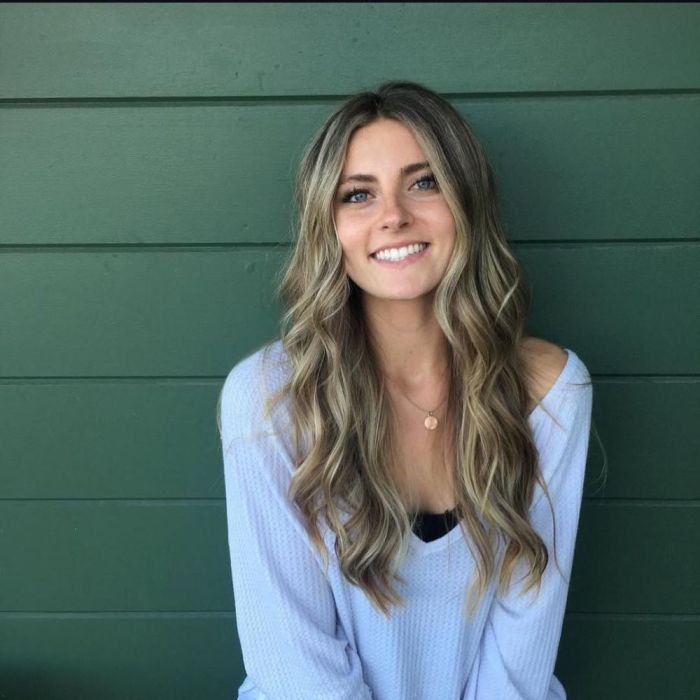Hairstyles to Volumize Thin Hair
Understanding Thin Hair
Hairstyles to volumize thin hair – Thin hair, characterized by a reduced hair density, can stem from various factors, leading to a less voluminous appearance. Understanding the types of thin hair and their causes is crucial for selecting appropriate volumizing techniques and treatments.
Types and Characteristics of Thin Hair
Thin hair isn’t a single entity; it manifests in different ways. Fine hair, for instance, has a small diameter, resulting in a limp and easily weighed-down appearance. This is different from thinning hair, which involves a decrease in the number of hair follicles. Some individuals may experience a combination of fine and thinning hair, making volume even more challenging to achieve.
Causes of Thin Hair
Several factors contribute to thin hair. Genetics play a significant role, determining hair follicle size and density. Hormonal imbalances, particularly during pregnancy or menopause, can also influence hair thickness. Nutritional deficiencies, stress, and certain medical conditions can further exacerbate thin hair. Additionally, harsh chemical treatments and excessive heat styling can damage the hair shaft, making it appear thinner.
Factors Influencing Hair Volume
Hair volume is influenced by several interconnected factors. Hair density (number of follicles), hair diameter (thickness of each strand), and hair health all play a critical role. Lifestyle factors, such as diet and stress levels, also contribute significantly to overall hair volume and health.
Hair Type Comparison for Volumizing
| Hair Type | Characteristics | Common Causes | Volumizing Suitability |
|---|---|---|---|
| Fine Hair | Small diameter, limp, easily weighed down | Genetics, hormonal changes | Highly responsive to volumizing products and techniques |
| Thinning Hair | Reduced hair density, visible scalp | Genetics, hormonal changes, medical conditions | May require a combination of techniques and potentially professional treatments |
| Coarse Thin Hair | Larger diameter, but fewer strands | Genetics, aging | Responds well to layering and texturizing techniques |
| Damaged Thin Hair | Brittle, prone to breakage | Chemical treatments, heat styling | Requires gentle volumizing techniques and nourishing treatments |
Hairstyle Choices for Thin Hair: Hairstyles To Volumize Thin Hair
Strategic hairstyles can create the illusion of thicker, more voluminous hair. The choice depends on hair length and personal preference.
Five Hairstyles for Thin Hair
Several hairstyles are particularly effective at creating volume and minimizing the appearance of thin hair. These include layered cuts for added texture and movement, pixie cuts for short hair, long layers for length without weighing down the hair, lob (long bob) for a versatile medium-length option, and blunt bobs for a chic, fuller look. Each style offers unique benefits and considerations based on hair texture and face shape.
Step-by-Step Guide: Layered Lob, Hairstyles to volumize thin hair
- Start with damp hair and apply a volumizing mousse.
- Rough-dry the hair using your fingers to lift the roots.
- Use a round brush to blow-dry sections of hair, focusing on lifting at the roots.
- Once dry, use a texturizing spray for added grip and volume.
- Style the ends with a curling iron or straightener, depending on the desired look.
Styling Techniques for Volume
Proper styling techniques and the right hair products are key to achieving voluminous thin hair. Mousse, volumizing sprays, and dry shampoo each offer distinct benefits.
Volumizing Hair Products
Mousse adds body and lift at the roots, while volumizing sprays provide a lighter hold and shine. Dry shampoo absorbs excess oil, creating texture and volume, especially on second-day hair. The choice depends on individual hair type and desired level of hold.
Blow-Drying for Volume
Proper blow-drying technique is essential. Use a round brush to lift the hair at the roots while directing the airflow from the scalp upwards. For added volume, consider using a volumizing brush attachment on your hairdryer.
Tools for Creating Volume
Round brushes, in various sizes, are ideal for lifting and shaping hair, creating volume and curl. Volumizing brushes, often with boar bristles, help to distribute product evenly and add lift.
Home Remedies and Treatments
Natural ingredients can support hair health and promote volume. A homemade hair mask can be a simple and effective way to nourish thin hair.
Natural Ingredients for Hair Volume
Ingredients like aloe vera, coconut oil, and essential oils (like rosemary or lavender) can promote hair growth and add shine. However, it’s important to note that results vary, and consistency is key.
Homemade Hair Mask Recipe
A simple mask can be made by combining ingredients like mashed avocado, honey, and olive oil. Apply to clean, damp hair, leave for 30 minutes, and then rinse thoroughly. This mask provides moisture and nourishment.
Essential Oils for Hair Volume

Source: buttercms.com
Essential oils like rosemary and lavender are often touted for their potential to stimulate hair follicles. However, it’s crucial to dilute them properly with a carrier oil before application to avoid irritation.
Professional Treatments

Source: fabbon.com
Professional treatments offer more intensive solutions for volumizing thin hair. Keratin treatments, hair extensions, and other salon services can provide dramatic results, though with varying costs and maintenance requirements.
Comparison of Professional Treatments
| Treatment Type | Pros | Cons | Approximate Cost |
|---|---|---|---|
| Keratin Treatment | Adds shine, reduces frizz, makes hair appear thicker | Can be damaging if done improperly, requires specific aftercare | $200 – $500+ |
| Hair Extensions | Adds significant volume and length | Can be expensive, requires maintenance and professional removal | $300 – $1000+ |
| Botox for Hair | Intense hydration and smoothing, resulting in improved volume | Temporary results, requires repeat treatments | $150 – $300+ |
Maintaining Voluminous Hair
Maintaining volume requires consistent effort and a dedicated hair care routine. Gentle handling and avoiding damaging practices are essential.
Tips for Maintaining Volume
Avoid over-washing, use gentle products, and minimize heat styling. Regular trims remove split ends, preventing breakage and maintaining healthy hair growth. A weekly hair care plan should include gentle cleansing, conditioning, and the application of volumizing products.
Weekly Hair Care Plan
- Monday: Wash hair with volumizing shampoo and conditioner.
- Tuesday-Thursday: Style as desired, using minimal heat.
- Friday: Deep condition to nourish hair.
- Saturday: Use a hair mask for added moisture.
- Sunday: Air dry hair if possible.
Visual Examples
Hairstyle Examples
A layered pixie cut creates volume and texture with short, choppy layers, ideal for fine hair. The layers add movement and prevent the hair from looking flat.
A long layered cut with face-framing pieces adds volume and movement to longer hair, preventing it from looking limp or stringy. The layers are strategically placed to lift the hair away from the scalp.
A blunt bob, cut straight across at the chin, creates a bold, full look. This style is particularly effective for those with thicker, but still thin, hair.
Hair Product Application Examples
Apply mousse to damp hair, focusing on the roots, and then gently distribute throughout the lengths. This adds body and lift without weighing down the hair.
Spray volumizing spray onto dry hair, focusing on the roots and mid-lengths. This adds hold and texture, creating a fuller look.
Apply dry shampoo to the roots of dry hair, massaging gently to absorb excess oil and create volume. This is ideal for adding volume on second-day hair or between washes.
FAQ
Can I use heat styling tools daily to volumize my hair?
Achieving volume with thin hair often requires strategic styling. Many techniques focus on creating the illusion of thickness, and for a special occasion like prom, this is especially important. If you have medium-length hair, you might find inspiration in articles dedicated to hairstyles for prom medium length hair , as these often incorporate volumizing elements. Ultimately, the goal is the same: to create a style that maximizes your hair’s natural texture and adds visual fullness.
While heat styling can temporarily add volume, daily use can damage thin hair, leading to breakage and further thinning. Limit heat styling to a few times a week and always use a heat protectant spray.
How often should I wash my thin hair?
Over-washing can strip natural oils, making thin hair appear even finer. Aim to wash your hair every other day or every two to three days, depending on your hair type and scalp condition.
Are there any specific vitamins that promote hair growth and volume?
Biotin, Vitamin D, and iron are often associated with healthy hair growth. A balanced diet rich in these nutrients can contribute to thicker, fuller hair. Consult a doctor before taking supplements.
What’s the difference between volumizing mousse and volumizing spray?
Mousse provides more hold and body, ideal for creating lift at the roots. Volumizing spray is lighter and adds texture, good for fine hair that needs a boost without feeling stiff.












